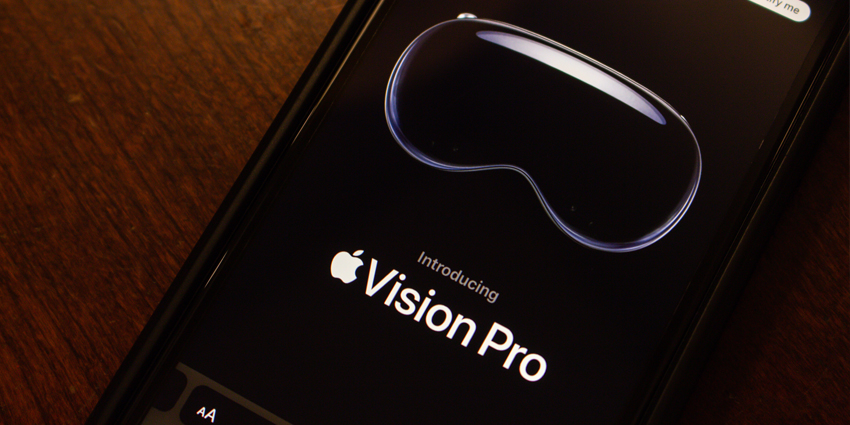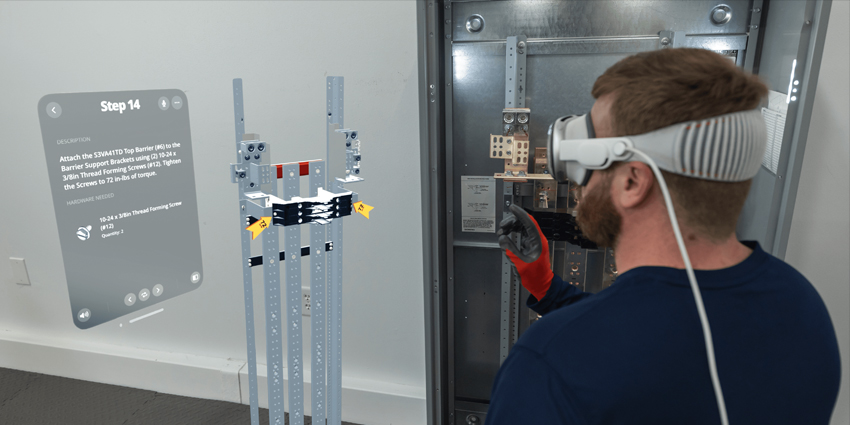The era of spatial computing has arrived, said Apple CEO Tim Cook, and today, the firm looks to realize its goal with the debut of the Vision Pro – a mixed reality headset – for US customers.
According to the firm’s CEO, the Apple Vision Pro “is the most advanced consumer electronics device ever created,” partly thanks to a “revolutionary and magical user interface that will redefine how we connect, create, and explore,” the CEO remarked.
The Vision Pro is a spatial computing device – a term Apple uses to describe its brand of AR/VR/MR solutions and to separate itself from the market – which aims to extend the usability of standard computers by removing the restrictions set in place by traditional 2D desktop screens. Apple’s new device achieves this by creating a 3D computing interface that surrounds a user, allowing them to access MR-powered productivity applications by leveraging a user interface laid on top of their real-world environment.
Currently, the Vision Pro is only purchasable by US customers, however, Apple is expected to roll out worldwide release windows at its WWDC event later this year.
Features, Specs, and Pricing
Apple announced that the Vision Pro will cost $3,499 for the 256GB storage model. Additionally, Apple is working with ZEISS to offer optional optical inserts for the device in a bid to improve accessibility options available alongside current XR devices. The “Readers” option will cost $99, and the prescription standard optics will be available for $149.
Apple has also created a range of accessories for the Vision Pro to increase user comfort and usability, including a solo knit band, dual loop band, light seal, two light seal cushions, an Apple Vision Pro cover, polishing cloth, battery, USB-C charge cable, and USB-C power adapter.
To further enhance the user experience, Apple is launching an accompanying App Store for the Vision Pro solely for XR software, allowing users to quickly download productivity solutions for working, peer-to-peer collaboration, and viewing reference material.
Unlike its competitors, Apple is not using Qualcomm technology for these processors; unlike competitors, instead, the firm is using a custom M2 Silicon chip and Apple’s R1 graphics processor, both of which support MR applications.
This device also features a high-resolution display across two micro-OLED lenses that boasts a 23 million pixels display, high-dynamic range (HDR), and wide colour gamut (WCG) outputs.
In addition to its hardware specifications, the Vision Pro device has a 2-hour battery life, an immersive camera for capturing spatial audio/photos/video for peer-to-peer sharing, iPhone/iPad/Mac synchronization, a light seal, a LiDAR scanner, and a TrueDepth camera.
Thanks to the device’s custom and unique realityOS, the Vision Pro works alongside the firm’s other hardware products, including the iPhone, iPad, and Apple TV.
What’s Available for Enterprise Customers?
Apple is collaborating with numerous launch partners to secure the device with workplace applications, ready for the initial US launch window.
For example, Microsoft is officially launching immersive versions of Office 365 and Co-Pilot software solutions, allowing early adopters to access realityOS versions of Microsoft Teams, Word, Excel, PowerPoint, Outlook, OneNote, and Loop on the spatial computing device alongside integrated Co-Pilot features.
Microsoft PowerPoint users can create customized presentation slides with Vision Pro with immersive practising features, Excel allows users to see immersive visuals based on their data, and Teams enables device operators to collaborate and engage with business processes in a spatial computing environment while also utilizing the device’s Personas feature.
Moreover, CoPilot for Vision Pro helps users draft, edit, summarize, and create 365 content, such as allowing users to create PowerPoint presentations based on a simple prompt or natural language command.
Another huge enterprise win for Vision Pro is its support of Zoom, the famed video conferencing tool.
Starting today, US Vision Pro customers can use a spatial version of Zoom. According to Smita Hashim, Zoom’s Chief Product Officer, the application will help teammates and workers stay connected “no matter when and where they work, or how they communicate and collaborate.”
Interestingly, Zoom will also leverage Personas, but which conferencing tool will win audiences’ favour?
Plenty of other leading productivity application providers are debuting on the device, ready to change the world of work – such as Adobe, Webex, and Notion – however, will the device accelerate mainstream interest in XR, or will it be another Metaverse crash?
Leading XR firms like Meta are optimistic that the device will bring fresh optics to the XR device market, but how this will affect the AR/MR/VR space will soon become apparent.







